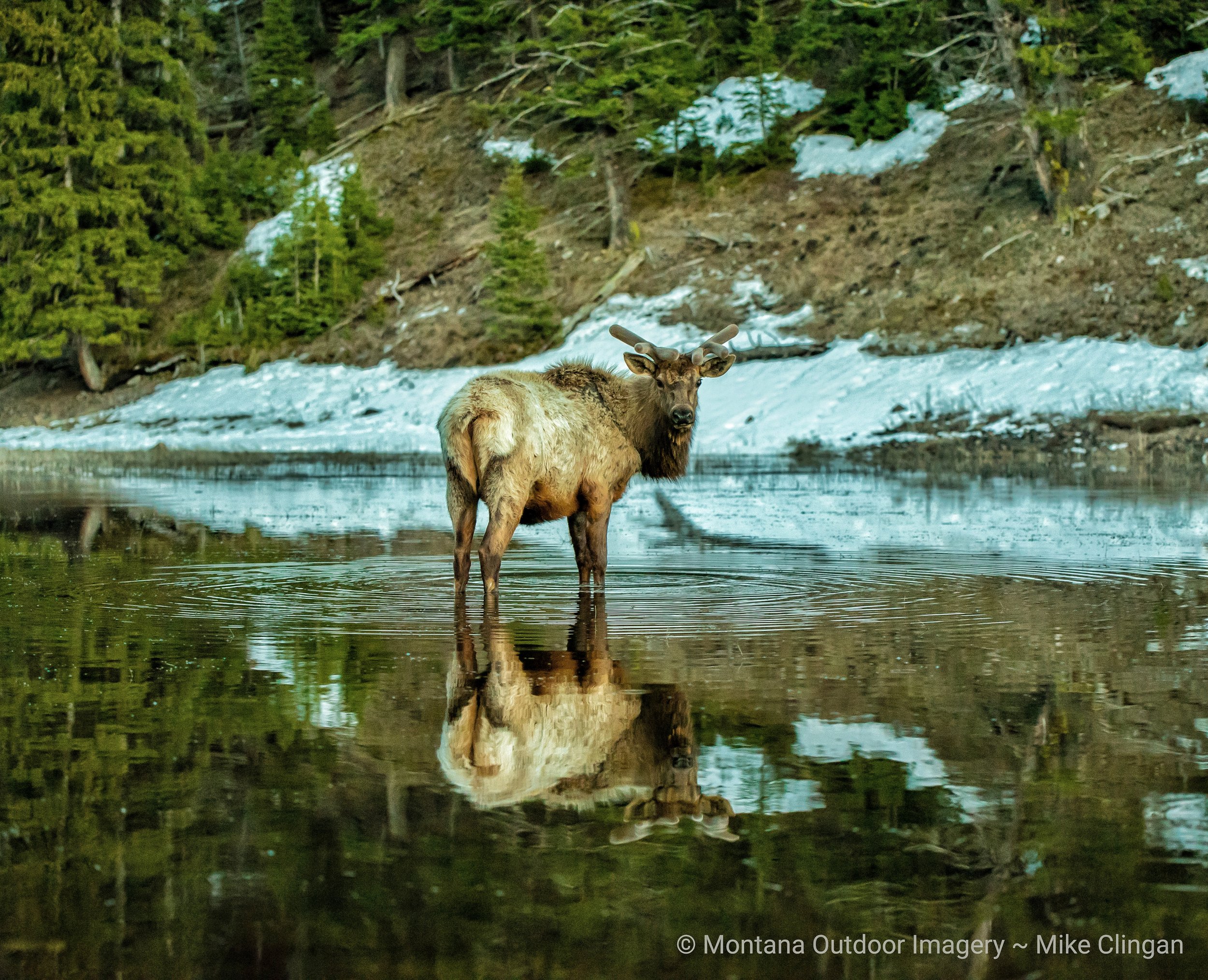
Get Engaged for Elk Management Planning - 2022
FWP Meetings
The Department of Fish, WIldlife and Parks has announced 41 scoping meetings to take input on what should be in the new Elk Management Plan.
These meetings start as early as June 20th in Wisdom & Columbus and spread out from there.
We are encouraging everyone to attend these meetings and let your thoughts on elk management be known. Only by showing up and being counted, can we ensure that our long-standing tradition of elk being managed for all Montanans be upheld.
Below you will find some generic talking points to consider submitting during these scoping meetings, but we also strongly encourage you to submit comments relative to your own hunting districts, and locations. You know best what happens in the districts you hunt the most - your voice needs to be heard in that regard.
Suggested points to put forward:
1.) Manage for realistic objective numbers. Many landowners and hunters are calling for realistic objective numbers rather than the artificially low objectives that are currently in place. These objectives should be informed by actual biological carrying capacity and landowner tolerance. Striking a balance between over abundance and artificially low numbers is difficult, but the current objectives are part of the reason conflict is so high. The current Elk Management Plan (EMP) provides a good roadmap on how to approach this issue on Page 55 that calls for cow only seasons in areas that are over objective and for not counting elk on lands that are inaccessible to hunters.
2.) Hunter disbursement: Season structure, crowding and loss of hunter access to traditional private lands all combine with heavy pressure on public lands to create situations where elk flee available habitat in order to find safe spaces out of harm's way. Other states have managed to crack this nut, so MT needs to look at how to distribute hunters better across the landscapes where elk live..
3.) Elk-Borne Disease Management. Brucellosis, Chronic Wasting Disease (CWD) and other vectors can be major motivators with elk management, especially inside the Designated Surveillance Area for Brucellosis, and all over the state relative to elk. Managing disease resiliency is a critical part of this effort. Simply trying to kill our way out of the issue ignores the reality of an endemic disease, and as such, research and funding must be put forward to help find potential solutions to both the brucellosis issue as well as CWD, Epizootic Hemorrhagic Disease (EHD) and other endemic wildlife disease issues.
4.) Protect migration corridors, travel corridors & sage wildlife passage: Ensuring that elk and other wildlife have their migration routes protected on public land and through willing seller-willing buyer land purchases and permanent easements.
5.) Habitat Montana. Continue to focus on permanent habitat conservation across the state through the use of Habitat Montana for permanent Conservation Easements and new Wildlife Management Areas. Borth of these options provide permanent access for hunters based on landowner needs and the wildlife management prescriptions local biologists set. This program is a benefit for family farmers & ranchers as well as hunters. It’s continued use is critical in ensuring Montana’s continued commitment to wildlife conservation, family farming and ranching and ensuring that wildlife and hunters will always have places to thrive.
6.) Increase positive contacts between landowners, hunters and agency staff. This means having full staff capacity and increasing staff that works on Block Management and other positions within the wildlife division. It’s imperative that our biologists, wardens, Block Management administrators and others who are in daily contact with landowners and hunters are empowered to find collaborative approaches that benefit all stakeholders as well as wildlife. Ensuring that local connection means better outcomes for landowners and for hunters while also improving the relationships needed to conserve our valued wildlife.
7.) Travel on public lands: FWP must remain engaged in travel planning on public lands: Elk Security Standards and FWP’s role in travel management on public lands. This is a good place for us to bring in the discussion about ensuring FWP support for closing motorized use on Forest Service or Bureau of Land Management roads where there are elk security issues and hunter success dictates.
Region 5:
Red Lodge
June 21 from 5-8 p.m.
Red Lodge Senior Center
HDs: 502, 525, 555
Billings
June 22 from 5-9 p.m.
Hilton Garden Inn
HDs: All Region 5 HDs (502, 515, 525, 535, 540, 555, 565, 575, 580, 590)
Roundup
June 28 from 5-9 p.m.
Roundup Senior Center
HDs: 411, 535, 590
Big Timber
June 29 from 5-9 p.m.
Big Timber Library
HDs: 315, 515, 565, 575, 580
Harlowton
June 30 from 5-9 p.m.
Harlowton Kiwanis Center
HDs: 411, 515, 535, 540, 580
Region 3:
Wisdom:
June 20 from 6:30-9 p.m.
Wisdom Community Center
HDs: 321, 329, 331
Helena 1 of 2
June 22 from 6:30-9 p.m.
Helena Middle School Auditorium
HDs: 380, 391, 392
Helena 2 of 2
June 27 from 6-8 p.m.
Helena Middle School Auditorium
HDs: 318, 335, 339, 343, 388
Townsend
June 28 from 6:30-9 p.m.
Broadwater Rod & Gun Club Indoor Shooting Range
HDs: 380, 390, 391
